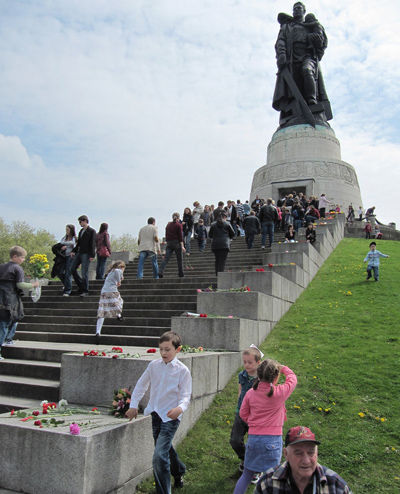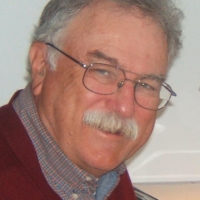
I was staying at the Yunost Hotel in Moscow in early December, 1967. It was a layover for about three days before I flew with other fraternal delegates from around the world to Ulan Bator where the Mongolian Communist Youth League was holding its convention.
At dinner in the hotel dining room, one evening, I was joined by my traveling companion, Somaratne, from Sri Lanka, and by our interpreter, Volodya, who was also a leader of the Komsomol (Soviet Communist Youth League).
The Yunost Hotel, in fact, was owned by the Komsomol and was filled with youth from all over the USSR and the world. We were talking excitedly about world events. Somehow, the assassination of president John F. Kennedy came up. I reached in my pocket and pulled out a shiny JFK half dollar. Volodya was fascinated and sat studying the profile image of JFK.
Volodya wanted to know my opinion of Kennedy’s assassination and I told him I did not believe the official story that Lee Harvey Oswald acted alone. I was convinced that reactionary, pro-war forces, like FBI Director, J. Edgar Hoover, notorious for his venomous hatred for the Kennedys, were behind the plot to murder our president.
Volodya sat nodding in agreement as I spoke.
“You can have it. It’s yours,” I told him when he handed the coin back to me. Volodya was over the moon, thanking me profusely for the gift. Then he reached in his pocket and pulled out a one ruble coin. It was the “Soldier Liberator” coin celebrating the 20th anniversary of the Red Army liberation of Berlin.
It features an image of the Red Army soldier cradling a German child in his arm. His boot is resting on the broken image of the Nazi swastika. He is holding a sword that has slashed apart the swastika.
It was my turn to be “over the moon.” I have this coin, still, one of my treasured possessions. It was among the first of many times I experienced the intensity of the anti-war emotions Soviet citizens felt because of their loss of a father, brother, cousin, or another family member in the Great Patriotic War. Virtually every person I met on that first and subsequent trips to the Soviet Union had endured these losses.
On that same trip, Somaratne and I took the overnight train to Leningrad. Among the places we went were the Piskariovskoe Cemetery where many thousands are buried, among the nearly one million who perished in the Nazi siege of Leningrad. As we stood in the snowbound park among the gravesites, we could hear the somber notes of Chopin’s funeral dirge from a public address system in the park.
We also were flown to Stalingrad—now Volgograd—where we visited the war memorial on Mount Mamayev where Soviet soldiers fought to defend their city and their nation with the slogan, “Not One Step Back.” The memorial was just being completed. A long flight of steps rises on Mount Mamayev with walls on each end sculpted with the haggard faces of Red Army soldiers who defended the city.
The giant statue of “Mother Russia,” had just been completed. Her mighty arm is flung back over her shoulder; she is holding a sword, as if summoning the people to rise in defense of their nation against the Nazi invaders.
However moving these images were, I was struck even more in the years that followed by the devotion of ordinary Soviet men, women and children to the memory of their war dead. On a trip to the USSR in 1974, my wife Joyce and I went strolling in a park in Kiev on the bluff overlooking the Dnieper river. In the middle of this park was a modest statue honoring the Soviet soldiers who died in the defense of Kiev and in the battle later to drive out the Nazis who had invaded the city.
There was a lovely young couple at the memorial. The groom a tall awkward young man, the bride in her white satin trousseau, a veil covering her face. She was bending down and laying a bouquet of flowers at the memorial.
Our interpreter told us, “It is a tradition now. Married couples, as soon as they have exchanged vows, come to the war memorial and lay flowers honoring those who died defending our country.”
In November 1994, just 27 years after Volodya gave me that coin, I went on assignment to Berlin to cover the 5th anniversary of the liquidation of the German Democratic Republic (East Germany). My host, Klaus Steiniger, took me to Treptower Park where 5,000 Red Army soldiers are buried representing the 50,000 Soviet soldiers who died in the liberation of Berlin. There was the original, an enormous bronze statue of the “Soldier Liberator.” It was sculpted by Soviet sculptorYeygeny Vuchetich and unveiled in 1949.
It is based on a real incident, Nikolai Maslov, who fought in defense of Stalingrad, and battled all the way west to Berlin, had crawled out on a bridge over the River Spree and rescued a little German child. SS troops, defending this approach to Hitler’s bunker in the Tiergarten, were laying down a deadly machine gun fire. They did not care if they murdered the little German girl and her Russian rescuer.
I am looking at my treasured coin and wondering about Volodya. As I recall, his father died in the defense of Moscow.
Photo: Memorial to Soviet soldiers in Berlin’s Treptower Park. Wikipedia (CC)










